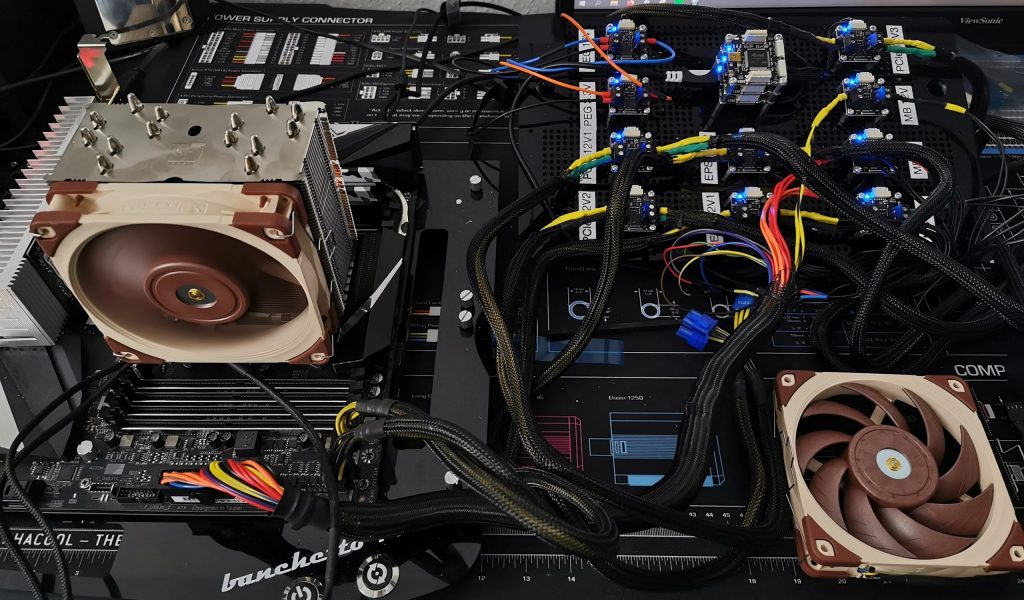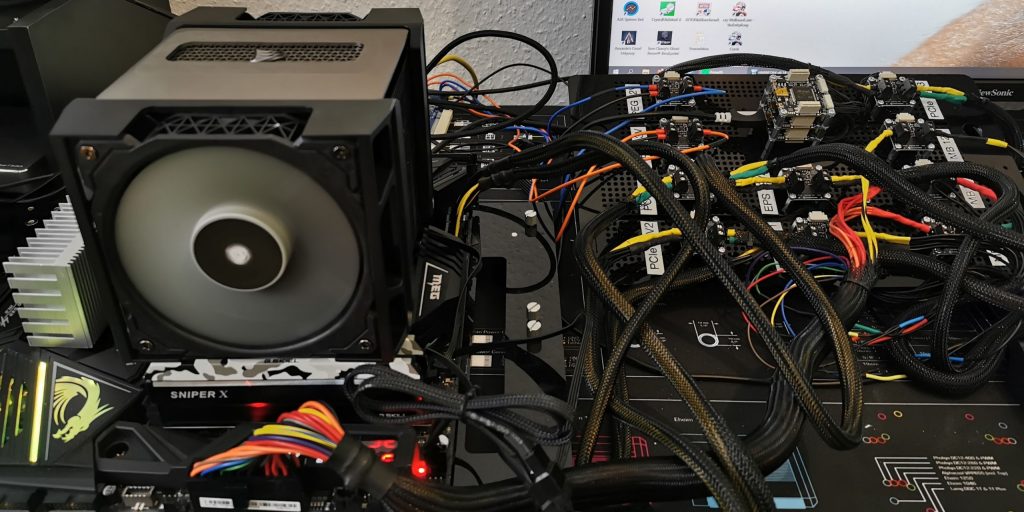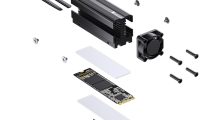Relevance vs. Waste heat – Which CPU is best?
Let's return to the initial problem of system selection, which was already briefly torn up. I have done a lot of tests in advance with the most diverse air and water coolers in order to find out where and how to get the finest nuances in the can still reliably measure different cooling performance. This certainly doesn't sound very complicated, but it is, because it is not only the different heatspreader sizes and power losses that distinguish the CPUs from each other.
If you want to test air and water coolers reliably on a single system, you have to be able to produce precisely graduated power of power (heat). Since I would like to use precisely set values of 65, 95, 125, 155, 185,215 and 245 watts, I need a suitable, powerful CPU and a correspondingly calibrated motherboard, where I can also adjust the supplied power as precisely as possible. In the Case of Intel systems, I deliberately rely on the socket 2066 and the 250 watts of a Core i9-7980XE that I thought to be the maximum. Despite or precisely because of the non-soldered heat spreader (IHS), this socket 2066 CPU is particularly suitable, which also covers the CPUs of the socket 1151 quite well.
If I were to pursue the ideal case, it would certainly have become a power MOSFET with smart control. But this has zero practical relevance. A Core i9-9900K doesn't easily create the 250 watts over 30 minutes (and more) and a first- or second-generation Ryzen has very similar problems. This significantly narrows the selection, but in the end it remains flexible enough for the most objective tests possible.
I measure the two EPS rails in real time with my special measuring setup (picture above) for motherboards and have also stored a comparison curve for plausibility, which takes into account the voltage converter losses at the respective power levels. The displayed sensor values for the package power plus these losses are quite exactly the same as what I am doing in terms of performance. This was a very precise way of finding out the BIOS settings that I also need for an exact limitation to obtain the most constant power dissipation possible.
Unfortunately, it is not enough in the BIOS e.g. just set 125 watts, because that will definitely go wrong. Unfortunately, you can't avoid exact calibrations in advance, because without priced losses outside the CPU, the values are simply not plausible. The fixing of the CPU clock is logically eliminated and you can really concentrate on the actual waste heat, which is essential in a cooler test.
Problems with third-generation rying
Even if the AMD Ryzen of the third generation as 12- or 16-corers could also achieve power losses of 200 watts and more, which is quite possible with the Chiller – with room temperatures of 22 °C+ and air as the final cooling medium, this definitely goes wrong, even with Open-loop water cooling. In addition to the special features of the Ryzen CPUs, however, I will soon publish a special article with measurement series, which one would certainly not have suspected in the end result.
I still use a system with the Ryzen 9 3900X for all tests, but limit the TDP to a maximum of 185 watts due to the thermal limit. Since with these CPUs every air cooler usually acts very similarly from a certain, high cooling performance and also runs into the thermal offside at almost the same place, the nuances are all the more interesting until reaching this limitation. Especially with the reference cooler Noctua NH-U12A, there are differences between single-fan and push-pull systems, which you simply do not notice so clearly on an Intel CPU or an older Ryzen.
I have also summarized the individual components of the test system in tabular form.
| Test System and Equipment |
|
|---|---|
| Hardware: |
Aorus X299 Master AMD Ryzen 9 3900X 2x 8GB G.Skill SniperX DDR4 3200 |
| Cooling: |
Alphacool Polar Bear Aurora Thermal Grizzly Kryonaut |
| Case: |
Lian Li T70, Raijintek Paean Open Benchtable |
| Monitor: | BenQ PD3220U |
| Power Consumption: |
MCU-based: Scope-based: Voltage and Resistance: |
| Thermal Imager: |
1x Optris PI640 + 2x Xi400 Thermal Imagers Pix Connect Software Type K Class 1 thermal sensors (up to 4 channels) |
| Acoustics: |
NTI Audio M2211 (with calibration file) Steinberg UR12 (with phantom power for the microphones) Creative X7, Smaart v.7 Own anechoic chamber, 3.5 x 1.8 x 2.2 m (LxTxH) Axial measurements, perpendicular to the center of the sound source(s), measuring distance 50 cm Noise emission in dBA (slow) as RTA measurement Frequency spectrum as graphic |
| Os: | Windows 10 Pro (1909, all Updates) |
Corsair Air Series A500 (CT-9010003-WW)




































Kommentieren